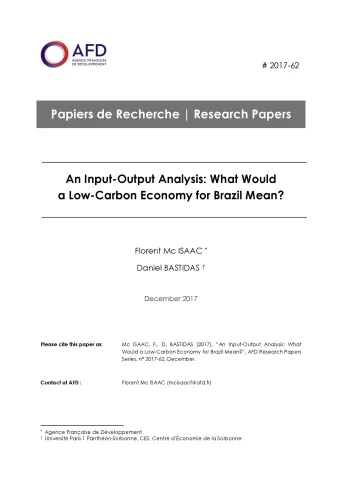Share the page
An Input-Output Analysis: What Would a Low-Carbon Economy for Brazil Mean?
Published on

Mixing economic growth with low-carbon objectives entails multidimensional challenges among which a shift in employment and a rapid transformation of infrastructure are involved. The aim of this paper is to provide a data-driven analysis to strengthen our understanding of what a low-carbon economy for Brazil would mean. Ultimately, our aim is to narrow the policy makers' spectrum of analysis when facing low-carbon economy objectives by using much information from the IOT in three ways: (i) identifying the current economic landscape; (ii) determining the potential transmission channels of assets that are written off balance sheets when capital becomes stranded; and (iii) understanding the sectoral implications of a low-carbon economy in the labor market. For planning low-carbon trajectories in Brazil, we find that: first, the economic landscape exhibits a significant drift towards oil-related industries--especially the chemicals sector--that may generate frictions in designing tomorrow's low-carbon economy; second, the financial and the oil sectors are highly interconnected and should be dealt with together; third, the wholesale sector appears to be basic and systemic, therefore economic policy should pay particular attention to this sector; and fourth, when assessing NDC impacts on the labor market we find that shifting activities from oil derivatives to biofuels is likely to create jobs while moving away from the extractive sector may increase unemployment.
Useful Information
-
Authors
-
Florent Mc ISAAC, MCISAAC
-
Coordinators
-
Florent Mc Isaac
-
Edition
-
62
-
Number of pages
-
32
-
ISSN
-
2492 - 2846
-
Collection
-
Research Papers
